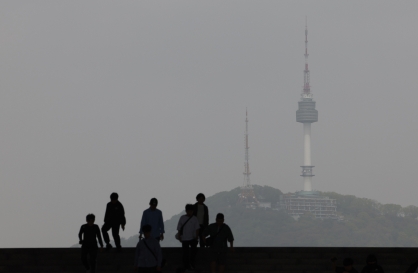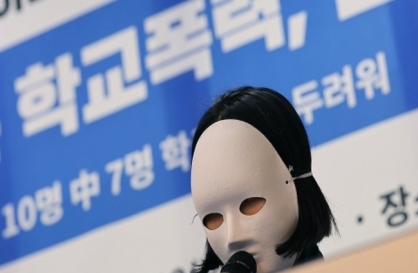Report highlights pain of Parkinson’s patients’ families
By Claire LeePublished : Aug. 11, 2015 - 21:38
South Korean family members caring for Parkinson’s disease patients are under both financial and emotional strain, a study showed Tuesday.
The study, organized by the Korean Movement Disorders Society, surveyed a total of 121 Korean caregivers whose family members are suffering from the disease, a degenerative disorder known to be idiopathic and have no cure. The disease chiefly affects middle-aged and elderly individuals, and is known to be associated with a deficiency of the neurotransmitter dopamine.
Among the surveyed caregivers, 20 percent said they were forced to quit their jobs to care for the patients, while almost 70 percent of them said they were under financial distress because of the cost of medical treatment, which mainly provides relief from the symptoms.
The study, organized by the Korean Movement Disorders Society, surveyed a total of 121 Korean caregivers whose family members are suffering from the disease, a degenerative disorder known to be idiopathic and have no cure. The disease chiefly affects middle-aged and elderly individuals, and is known to be associated with a deficiency of the neurotransmitter dopamine.
Among the surveyed caregivers, 20 percent said they were forced to quit their jobs to care for the patients, while almost 70 percent of them said they were under financial distress because of the cost of medical treatment, which mainly provides relief from the symptoms.

Almost 60 percent of them said they found caring for the patient stressful, and 42.6 percent said they were emotionally exhausted. Also, 18.2 percent of them were clinically depressed.
According to government data, the number of Korean Parkinson’s disease patients aged 60 or older increased from 14,636 to 26,344 from 2010-2014. The total cost to treat the patients rose dramatically from 91.6 billion won ($77.7 million) to 233.9 billion won in the same time period.
“It can be despairing for both the patient and his or her caregiver, because you know that no matter what you do, you cannot cure the disease and it will only worsen as the condition progresses over time,” said Lee Hyun-joong, a caregiver for his wife, who has had Parkinson’s disease for 20 years.
The numbers are expected to soar as the nation’s baby boomers ― those born 1955-1963 ― enter their 60s this year, and the current elderly demographic is predicted to double to more than 7.2 million in the next five years.
Among the surveyed caregivers, 66 percent were spouses of the patients, while 10.7 percent were the patients’ children. Fourteen percent were other relatives of the patients, while 9.1 percent chose not to reveal their relationship with the patients.
Symptoms during the early stages of the disease, such as tremors of the hands and stiffness, can be easily managed with prescribed medications. But patients may not be able to perform any physical movements in the final stage of illness and therefore must live with a caregiver or in a facility that can provide one-on-one care.
On top of advanced motor symptoms, patients at this stage may experience hallucinations and greater speaking and memory issues, such as Parkinson’s disease dementia.
In Korea, family member caregivers experience greater financial and emotional stress after 10 years, the study showed.
Sixty percent of the caregivers who have provided care for more than a decade said they have fewer life options because of their family member’s illness. Also, 75.4 percent said they were struggling financially, while 64.3 percent of those who were caring for patients with mild symptoms said the same. More than 60 percent of them said they were worried about household debt.
The study also showed that caregivers feel that there was not enough support available. Almost 40 percent of them said they could not access any information necessary for caring for Parkinson’s disease patients, while 52.1 percent said medical experts were “not helpful at all” with their questions and requests.
“Patients with Parkinson’s disease are required to take medicine for the rest of their lives,” said Choi Jin-kyung, the head of the Korean Movement Disorders Society. “There should be more educational and therapy programs for caregivers and more research is needed on why the number of patients of the disease is rising in Korea.”
By Claire Lee (dyc@heraldcorp.com)



![[AtoZ Korean Mind] Does your job define who you are? Should it?](http://res.heraldm.com/phpwas/restmb_idxmake.php?idx=644&simg=/content/image/2024/05/06/20240506050099_0.jpg&u=)














![[K-pop's dilemma] Is Hybe-Ador conflict a case of growing pains?](http://res.heraldm.com/phpwas/restmb_idxmake.php?idx=642&simg=/content/image/2024/05/07/20240507050746_0.jpg&u=)